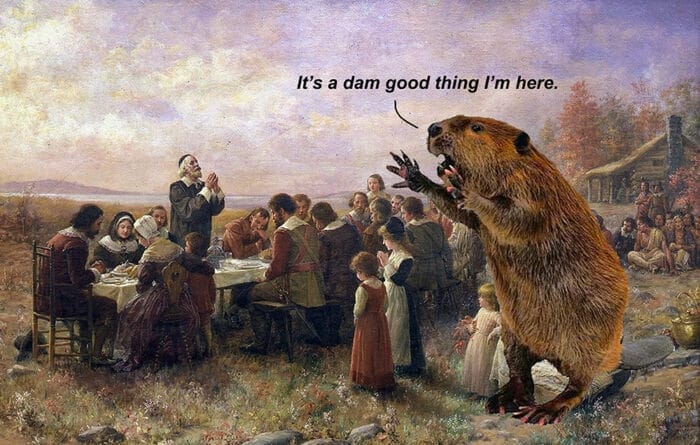It’s just easier to tell people that the Pilgrims came to America to escape religious persecution. It’s wide-sweeping, and you can say it, all in one sentence. But that’s not really the truth.
They made their voyage, on that Mayflower, in 1620.
Our Pilgrims, those Puritans, were from England as we know. And in England, they were not free to worship as they wanted. That part is true. So they packed up their little bags and moved to the Dutch city of Leiden. They found sanctuary there, and the year was 1608, a full 12 years before the westward boat trip.
During that entire time, in Leiden, they were free to worship as they please, free to hold their personal beliefs.
But the main source of income for them was working in Leiden’s textile industry. And they did this for nearly a decade. It didn’t pay much. At all. They had financial struggles. In England, they were successful farmers, but in the Netherlands, they mostly lived in poverty. They worked long hours for low pay. Weaving, spinning, and making cloth.
And after a full decade of this, the Pilgrims’ numbers were dwindling. Those troubling conditions made it very difficult to convince their fellow separatists to join them in Leiden. It didn’t matter about religious rights. Their pals back in England would rather stay there in the cushy life than have religious liberty in Leiden.
Not only that, their kids were getting sparky. That Dutch society was very secular and progressive. Those Dutch opened their city to a group of religious free-seekers, after all. But the Pilgrims complained that the Dutch society was corrupting the morals of their children. It was causing those crazy kids to turn away from their church and their good old English identity.
So. Things weren’t turning out so great after all. Their backs were sort of to the wall. They couldn’t go back to England. Not really. And that’s when somebody said after breakfast one day, “Hey, hey. Let’s go to America.” This seemed like a win-win. They could have religious freedom there, find some financial stability, and as a bonus, they could evangelize the Native Americans. Save some souls, if you will. (As we will see later, the Native Americans didn’t like wearing the bonnets, so that was a big miss.)
Back to it. Or should I say, back to the “backers.”
Yes, the financial backers. The Pilgrims had them. Profit-seeking corporations were launching England’s first commercial outposts in America. One group, called the Virginia Company, showed interest. Those Pilgrims made ideal candidates to launch a New World colony. They were a close-knit group. They were industrious. They were accustomed to hardship.
So, the deal was sealed with the Virginia Company to establish a settlement in its New World. A group of 70 London businessmen called the Merchant Adventurers supplied the capital to finance the whole shebang. These backers paid for the Mayflower, its crew, and a year’s worth of supplies.
They had a contract drawn up. Those Merchants wanted a return on investment. So it was required that the Pilgrims work for the company during their first seven years in America. Of course, when they first got to America, they barely survived, much less turned any kind of a profit. They scored a couple of beads, maybe.
Eventually, though, the beavers saved their butts. Yes, those poor beavers. The Plymouth Colony finally made some financial headway, thanks to beaver pelts. Apparently. that fur was in great demand back in England to make felt hats and other luxurious fashion accessories. So there it is.
The Pilgrims came to America to furnish the wealthy English with luxurious fashion accessories. And you thought it was about religious freedom.
==========
“This is my doctrine: Give every other human being every right you claim for yourself.”
― Robert G. Ingersoll
===========
“We cannot defend freedom abroad by deserting it at home.”
― Edward R. Murrow
==========
“And the turtles, of course…all the turtles are free, as turtles and, maybe, all creatures should be.”
― Dr. Seuss, Yertle the Turtle and Other Stories
==========
The truth about Pilgrims and good old Bucky.
